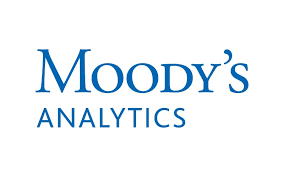Orbis Europe - European Company Data
 Orbis Europe is a database of comparable financial and business information on Europe's largest 600,000 public and private companies by total assets. 43 countries are covered. Orbis Europe is published by Moody's Analytics (formerly published by Bureau van Dijk as 'Amadeus'.) The database provides standardised annual accounts (consolidated and unconsolidated), financial ratios, sectoral activities and ownership data. Orbis Europe is suitable for research on competitiveness, economic integration, applied microeconomics, business cycles, economic geography and corporate finance.
Orbis Europe is a database of comparable financial and business information on Europe's largest 600,000 public and private companies by total assets. 43 countries are covered. Orbis Europe is published by Moody's Analytics (formerly published by Bureau van Dijk as 'Amadeus'.) The database provides standardised annual accounts (consolidated and unconsolidated), financial ratios, sectoral activities and ownership data. Orbis Europe is suitable for research on competitiveness, economic integration, applied microeconomics, business cycles, economic geography and corporate finance.
Orbis Europe is updated weekly, providing standardised annual accounts with up to ten years of time series. Data is collected and harmonised by Moody's Analytics from company filings and reports.
Online guides, sample datasets and recorded videos are accessible via the upper right query link on the Orbis Europe landing page. An interactive training programme is provided at three levels: basic, standard and advanced.
Activity codes used in Amadeus are NACE II, NAICS and SIC.
EUI users can access Orbis Europe via this Catalogue record (two simultaneous users).
- Select data by geographical coverage (eg. three European countries)
- level of coverage (eg. biggest 5,000 firms by assets)
- sectoral coverage (eg. Europe > food sector) and
- time-span (eg. ten years).
A standard company report includes 25 balance sheet items; 26 profit-and-loss account items; 26 ratios; descriptive information (including trade description and activity codes); and ownership information.
Companies are part of a default 'peer group' based on standard sectoral activity codes. Graphs indicate positions in the peer group. A company tree illustrates the structure of the group.
Current EUI members may access Orbis Europe via this Catalogue record.
Please read, and abide by, the terms and conditions of use for licensed data resources.
Related resource: The Banque de France and the European Committee of Central Balance-Sheet Data Offices (ECCBSO) maintain the BACH and ERICA databases.
Create a login to access data and tools. The interface is also available in French.
Related resource: The Competitiveness Research Network (CompNet) generates (i) European firm-level data in micro-aggregated format and (ii) a diagnostic toolkit for competitiveness indicators.
The Network comprises the European System of Central Banks (ESCB), the European Central Bank (ECB), the European Commission (EC), the Leibniz Institute for Economic Research of Halle (IWH), the European Bank of Reconstruction and Development (EBRD) and the Tinbergen Institute. "The dataset includes variables on employment, trade, productivity, mark-ups, financial constraints and more. Variable definitions and computation are harmonized across countries. Built at firm level, indicators are then aggregated to sectoral level (NACE 2-digit) in order to avoid confidentiality issues."
CompNet firm-level-based data access requires scholars to submit a data request form to the CompNet network. CompNet Diagnostic Toolkit for Competitiveness data can be downloaded at #2 at the foot of the CompNet Data page. Data is in a zipped file (4.9 MB). Consult the CompNet Terms and Conditions of Use for further information.
Related EUI Library resources
Capital IQ Pro (S&P) provides data on banks, insurance companies, financial institutions and financial markets worldwide. Coverage includes ownership information, market analysis, filings, financial statements, mergers and acquisitions' data and sectoral news. EUI members can create an account by following the instructions at 'How to access data'. The EUI provides access to the S&P Market Intelligence Financial Institutions Group (MIFIG) dataset. [Full details]
Compustat (S&P) provides financial information on over 28,000 U.S. and Canadian publicly-held companies from the 1950s to present. The database includes a wide range of income, balance sheet, flow of funds and supplemental data, across 340 annual and 120 quarterly items, with point-in-time snapshots from 1987 to present. The database is updated weekly, with archive from the 1950s to present; and from 1987 to present for point-in-time observations. [Full details]
Datastream (LSEG) is a global financial and macroeconomic time-series database, providing data on equities, stock market indices, currencies, company fundamentals, fixed income securities and key economic indicators for 175 countries and 60 markets. Equity data from IPO to present is updated daily. Macroeconomic time series are monthly, quarterly and annual, with up to 60 years of coverage. [Full details]
Factiva (Dow Jones) is a digital archive of global news content covering 18,000 sources from 159 countries. The platform also hosts the Factiva Companies & Markets database, providing five years of headline economic data. (EUI members requiring longer data series should use the other databases listed in this directory.) Users of Factiva can locate, elaborate and export data on single companies, or a selection of companies, by peer group. Custom reports can be generated in the Snapshot feature - including news, key developments and financial information. [Full details]
The Global Financial Database (GFD Inc.) provides long-range historical financial data on stocks, bonds, bills and other instruments, covering approximately 200 countries from the early modern period to the present. EUI members can create an account by following the instructions at 'How to access data'. The GFD platform is called 'Finaeon.' Data series are assigned nine metadata descriptors: Series ID; Description; Start date; End date/most recent; Periodicity; Country/territory; Currency; Series type (eg. government bond yields) and GFD sector designation (eg. equity). [Full details]
Data homepage
Contact: resdata@eui.eu
Page last updated on 19 June 2025